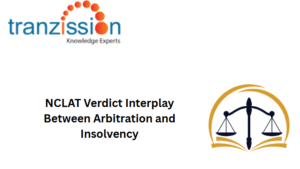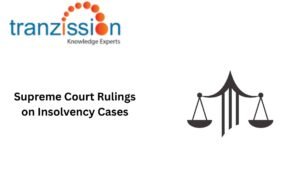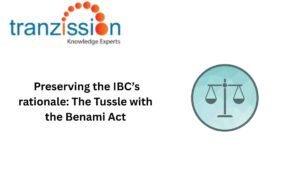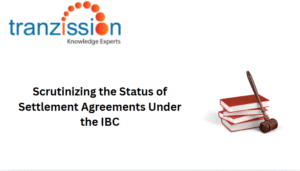
The Role of the Monitoring Committee
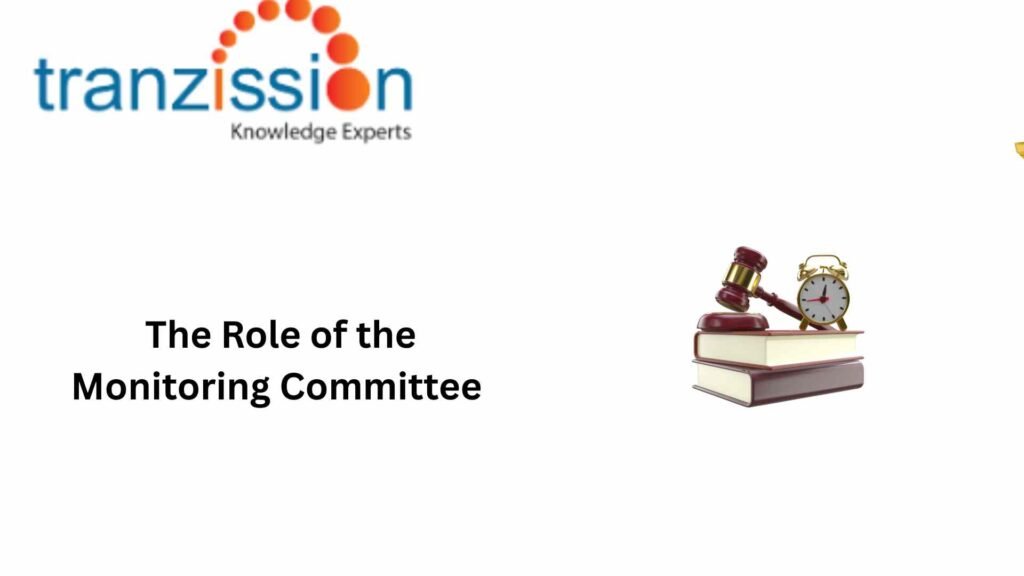
Table of Contents
The Insolvency and Bankruptcy Board of India (IBBI) had on 19th November 2024 issued a discussion paper on the Role of the Monitoring Committee under CIRP. highlighting the need to strengthen the regulatory framework governing Role of the Monitoring Committee under the Insolvency and Bankruptcy Code, 2016 (IBC). This paper elaborated on the duties and powers during the resolution process and the absence of a well-structured framework for their responsibilities.
What is a Role of the Monitoring Committee ?
Definition & Purpose:
The Monitoring Committee is a regulatory body that oversees financial, governance, and compliance-related activities in corporate entities and insolvency proceedings. They mainly ensure that the corporate governance standards and insolvency proceedings adhere to legal frameworks and regulatory guidelines.
Key Responsibilities of a Monitoring Committee:
Although not explicitly mentioned in the IBC or its rules or regulations, the Role of the Monitoring Committee involve ensuring transparency in corporate restructuring and insolvency resolution processes, monitoring financial transactions and regulatory compliance, and providing oversight on the execution of resolution plans under IBC.
Suggested Reading : Role of Independent Valuation in Maintaining Stakeholder Trust
Role of the Monitoring Committee in Insolvency Resolution Under IBC
Role in Corporate Insolvency Resolution Process:
A Monitoring Committee is proposed to oversee the implementation of resolution plans approved by the Committee of Creditors (CoC). It also ensures statutory compliance, smooth transfer of assets, and proper distribution of proceeds, thereby enhancing confidence in the corporate insolvency resolution process (CIRP).
Role in Liquidation Process:
Role of the Monitoring Committee play a crucial role by overseeing the fair and transparent distribution of assets to creditors and preventing fraud and mismanagement during liquidation. It helps to facilitate the smooth and efficient transfer of assets and control of the corporate debtor to the successful applicant.
Role in Government-Led Financial Monitoring:
It can also enhance the project criteria that better reflect the needs of potential beneficiaries. Thus, Role of the Monitoring Committee ensure public funds and assets are managed as per financial governance laws.
Regulatory Guidelines Governing Monitoring Committees
IBBI & NCLT Guidelines on Monitoring Committees in Insolvency Cases:
The IBC and IBBI regulations mandate the formation of Monitoring Committees to oversee CIRP and liquidation processes. As per Regulation 38 (4) (a) and(b) of the IBBI (Insolvency Resolution Process for Corporate Persons) Regulations, 2016 (hereon forward known as “the CIRP Regulations”), the monitoring committee consists of the resolution professional or any other insolvency professional, or any other person, including representatives of the committee and representatives of resolution applicant(s), as its members. The monitoring committee submits quarterly reports to the Adjudicating Authority regarding the status of implementation of resolution plan.
Government Regulations on Corporate Monitoring Committees:
Although the Ministry of Corporate Affairs (MCA) does not directly issue guidelines for the monitoring committee under the CIRP, the IBBI is responsible for these guidelines. However, the MCA guidelines emphasize monitoring committees for financial accountability in government and corporate entities.
Challenges Faced by Monitoring Committees in Corporate & Insolvency Governance
Lack of Standardized Frameworks for Monitoring Compliance:
The current framework lacks clear statutory guidance on the powers and functions of monitoring committees, leading to inconsistencies and enforcement challenges. As different regulatory bodies follow varying monitoring standards, it leads to inconsistencies. Further, the lack of clarity has resulted in varying interpretations by courts regarding the monitoring committees’ ability to initiate or defend legal proceedings on behalf of the corporate debtor.
Delays in Implementation & Reporting:
Regulatory bottlenecks often delay timely monitoring and enforcement actions. These delays can have significant consequences, including erosion of the value of the distressed assets, increased costs, and uncertainty for stakeholders.
Risk of Conflict of Interest in Corporate Governance Monitoring:
One of the most common challenges the monitoring committee faces is stakeholder resistance, which only delays and complicates the implementation of a viable resolution plan. The committee members, representing both creditors and the resolution applicant, may have differing priorities, potentially leading to a conflict of interest that needs to be addressed.
Case Studies – How Monitoring Committees Have Strengthened Insolvency & Corporate Governance
The Hon’ble Supreme Court in the matter of State Bank of India & Ors. v. The Consortium of Mr. Murari Lal Jalan and Mr. Florian Fritsch & Anr, emphasized the need for statutory recognition of monitoring committees and made several key recommendations regarding their constitution and functioning. In this case, the court states that the CoC must be empowered to constitute the Monitoring Committee. In the Essar Steel Case, the Supreme Court affirmed the primacy of the CoC in approving a resolution plan, allowing for differential treatment of creditors based on their security interests and the CoC’s commercial. Therefore, the Monitoring Committee must ensure fair creditor distribution under the IBC.
Best Practices for Strengthening Monitoring Committees
Monitoring Committees can improve their functions in the CIRP to streamline the resolution process. Independent evaluation and reporting of financial transactions done through digital tools can ensure real-time monitoring and compliance tracking. Further, using automated compliance tracking may enhance their efficiency. The IBBI needs to establish clear roles and responsibilities for Monitoring Committees under the IBC and corporate law. The issue of stakeholder awareness and transparency can be addressed by regular public disclosure of monitoring committee reports to enhance accountability.
The Future of Monitoring Committees in Corporate & Insolvency Governance
The integration of artificial intelligence (AI) can revolutionize compliance monitoring by enabling real-time analysis, automated processes, and enhanced transparency, ultimately reducing risks and improving efficiency. For instance, blockchain-based compliance tracking for fraud prevention & financial monitoring. By developing global compliance frameworks for insolvency and corporate monitoring, the IBBI can standardise the framework governing monitoring committees. The IBC has legal limitations on cross-border insolvency cases, hence, international collaboration is necessary for monitoring global insolvency cases.
Conclusion
By ensuring the effective implementation of resolution plans, monitoring committees strengthen corporate governance by promoting transparency, accountability, and the protection of stakeholder interests. They are tasked with overseeing the transfer of assets, compliance with statutory requirements, and the distribution proceeds, requiring a comprehensive understanding of the resolution plan and relevant regulations. As per the CIRP regulations, the committees need to submit quarterly progress reports to the Adjudicating Authority and the IBBI, ensuring transparency and accountability in the resolution process. However, the powers of this committee are not clearly defined, leading to confusion, divergent judicial interpretations and potential delays.

